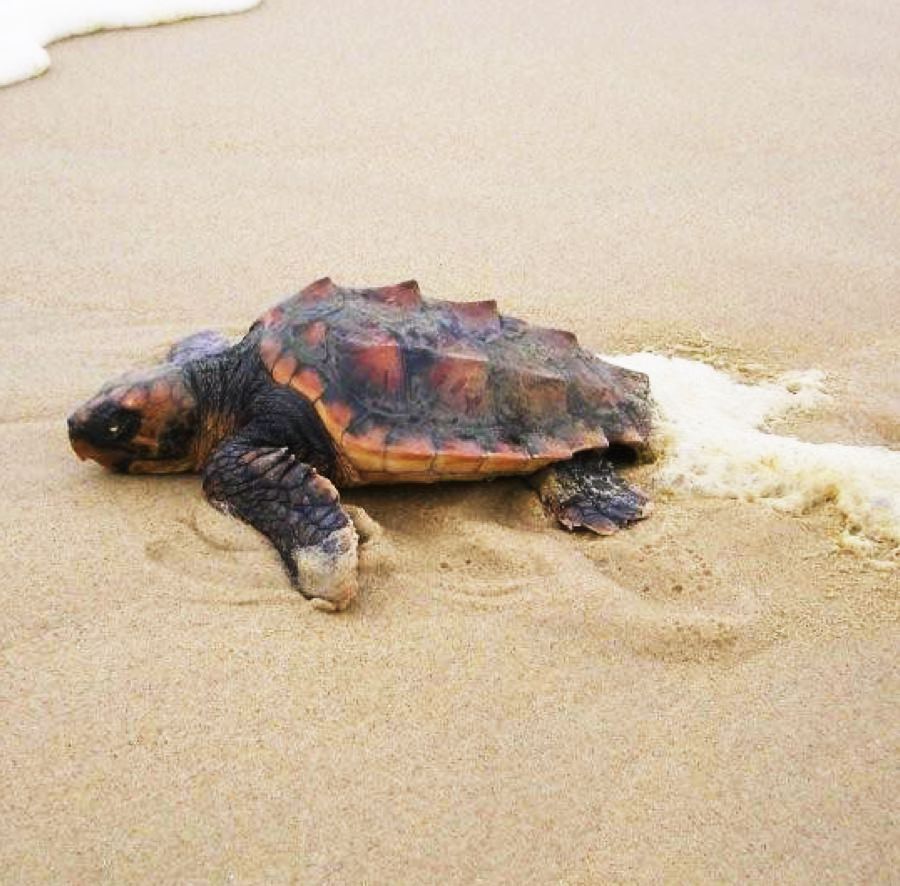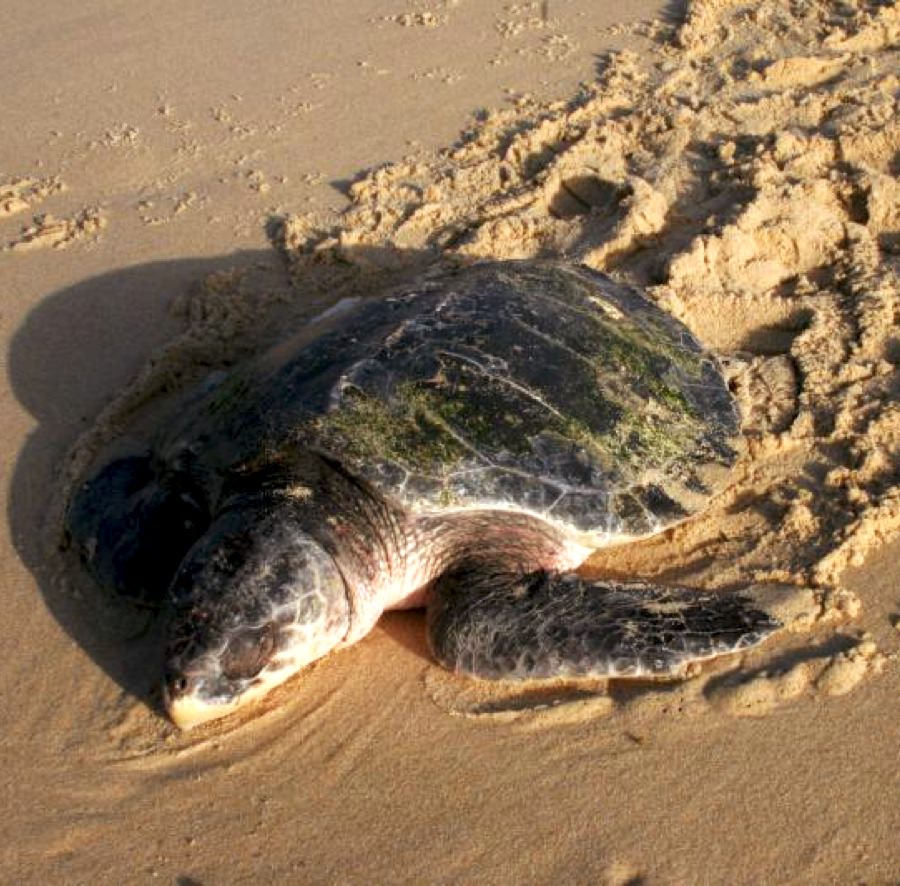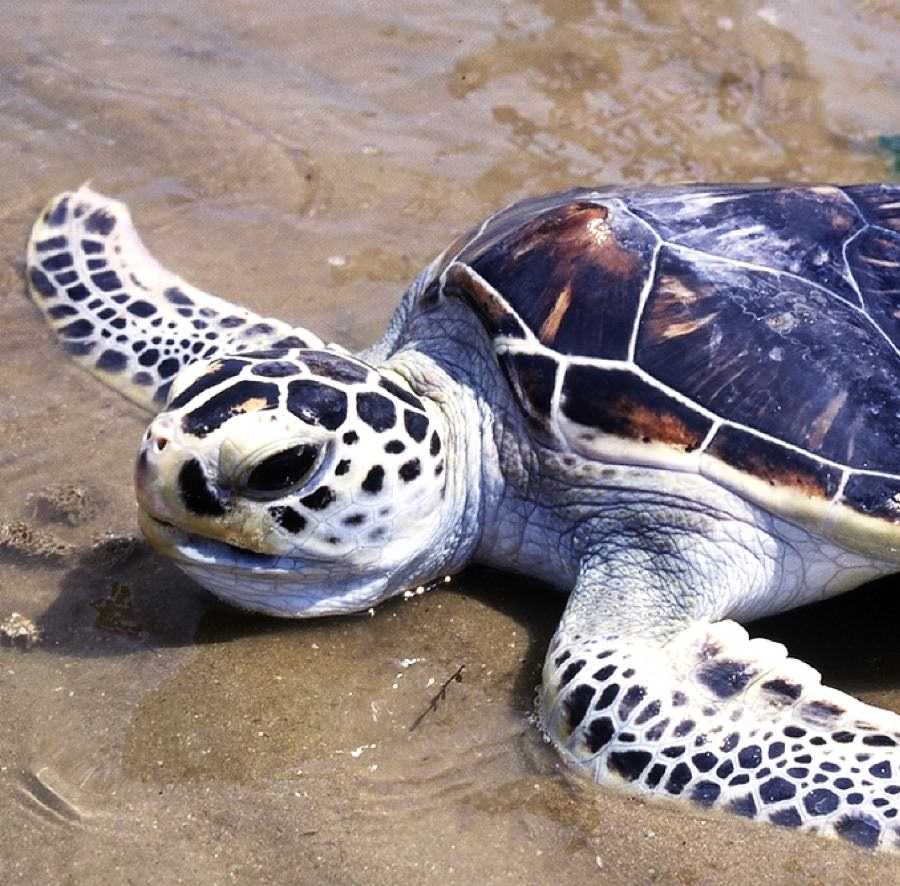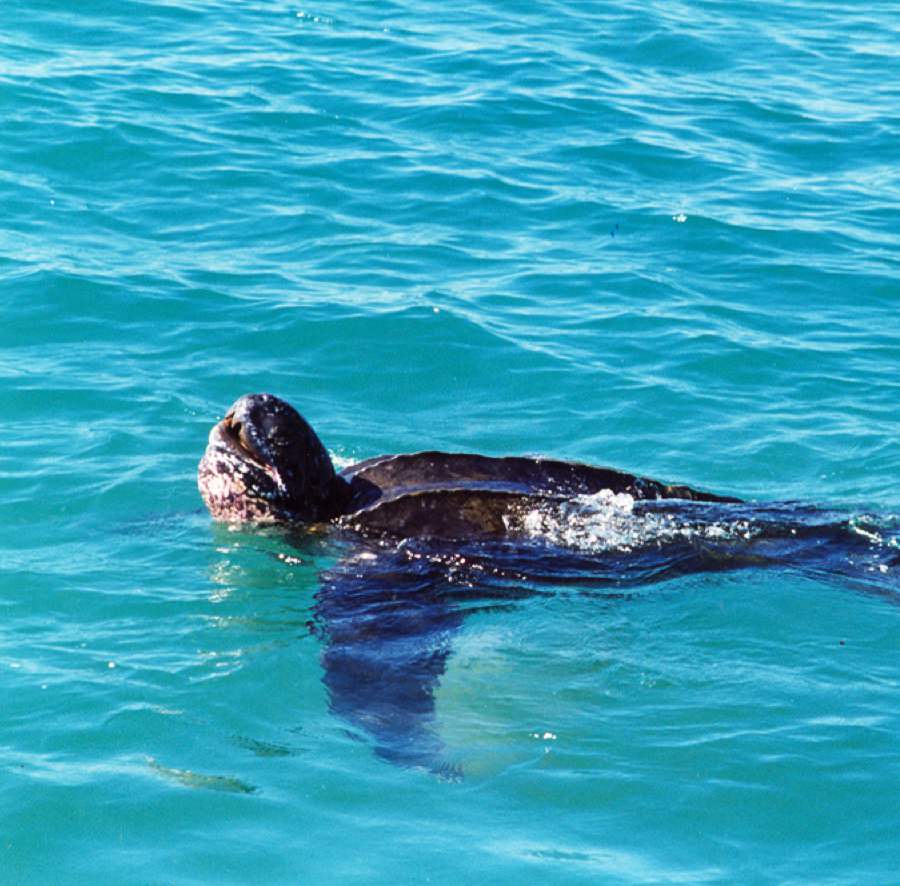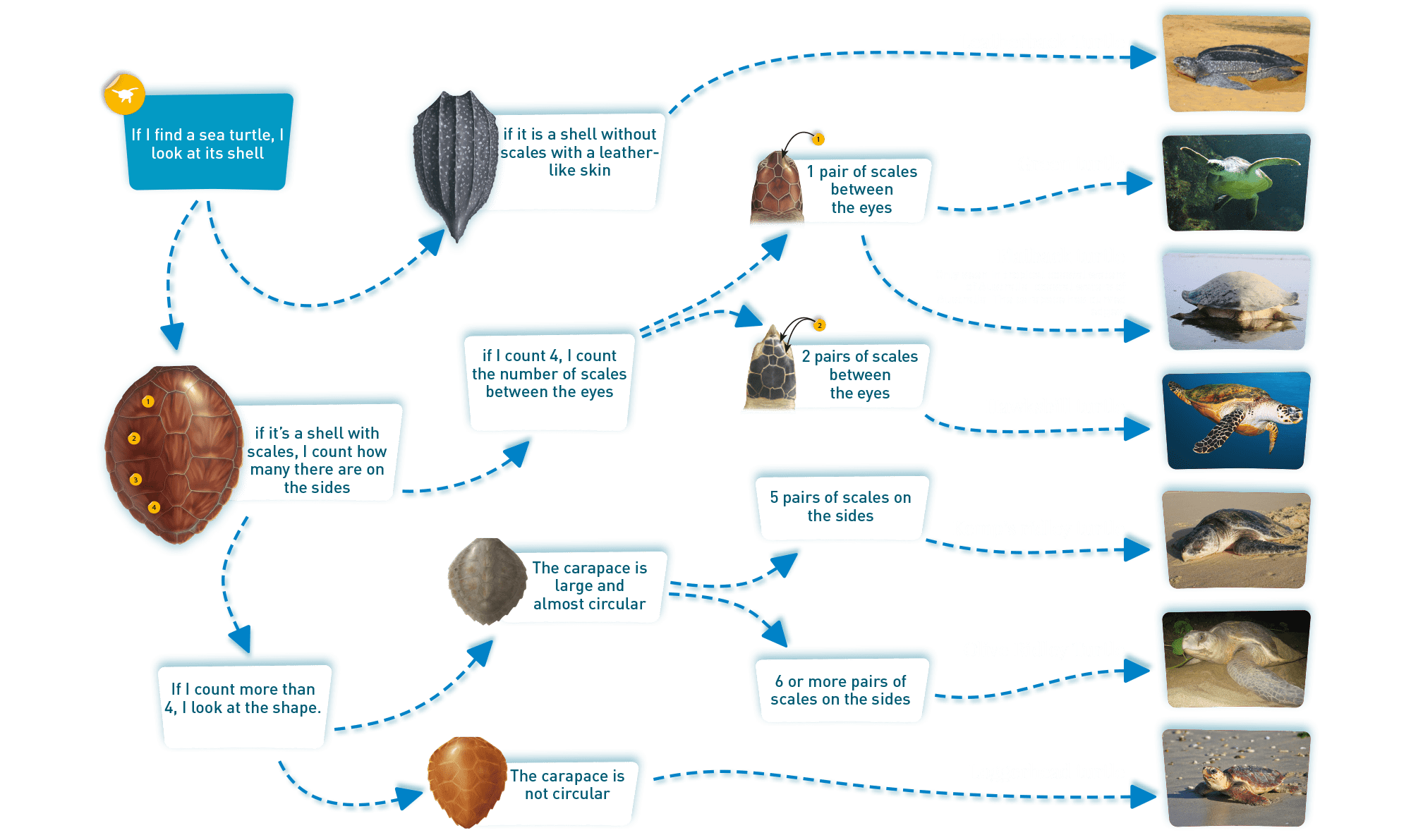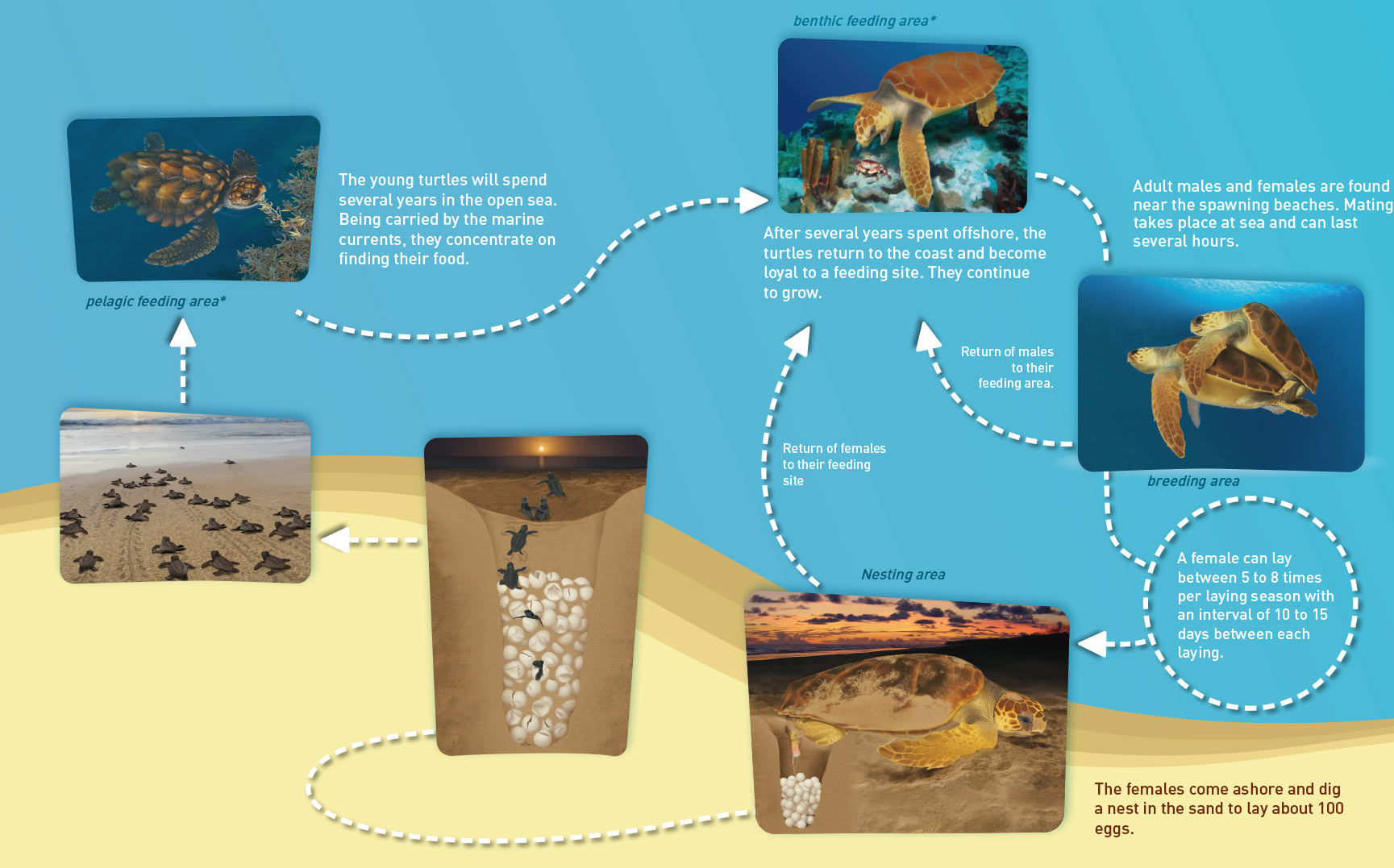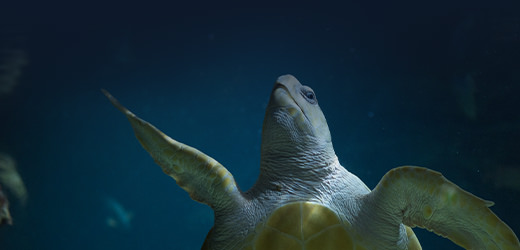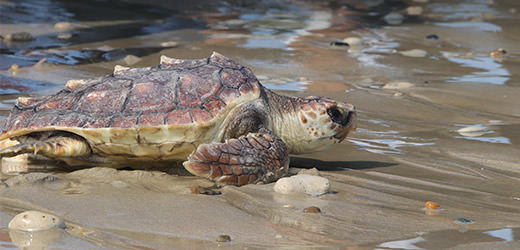Loggerhead Turtle
Caretta caretta
Living in all tropical and temperate waters of the globe, it is particularly affected by by-catch. It is the only species of turtle that can nest in temperate zones.
On our coasts, some young individuals strand in the winter period.
Conservation status: Vulnerable species according to the IUCN Red List Protection, CITES Appendix I and Appendices I and II of the Bonn Convention.
